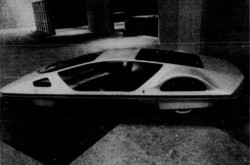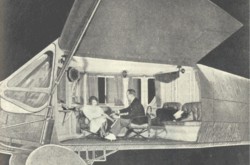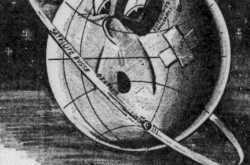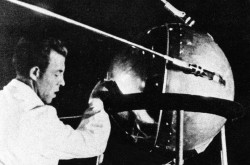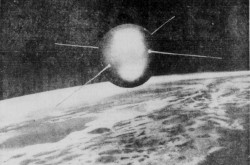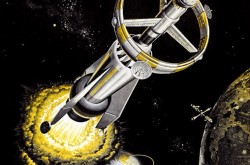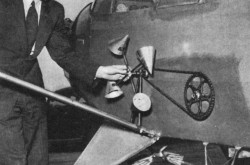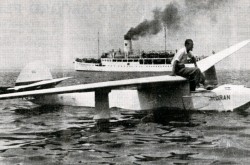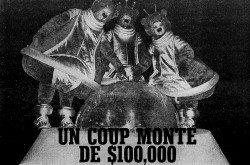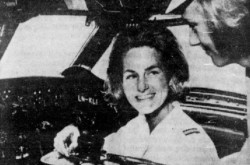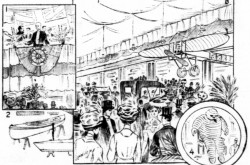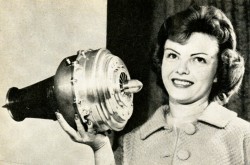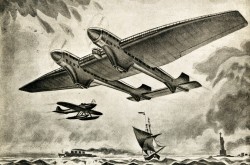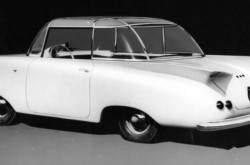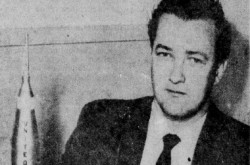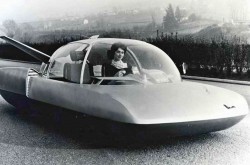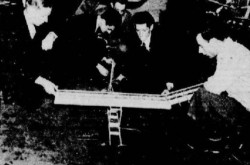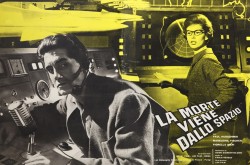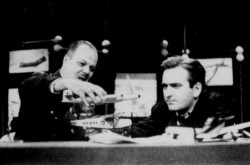Space, the final frontier. This is the voyage of the spaceship Excelsior

Hej, my reading friend, and... You seem puzzled. Oh, hej means hello in Danish. So, grab yourself one, Danish that is, the pastry of course. We have a story to share. If yours truly was to utter the word Himmelskibet, what thought or image would pop into your mind? Not much, from the feel of it, but that’s quite all right. Let us begin our journey through space and time.
The month and year were February 1918. Sorrow, pain, despair and anger reigned across Europe, North America and beyond. For the past three and a half years, much of Europe had been torn asunder by one of the bloodiest war in its, oh, so violent history. The Great War, the War to End All Wars, as it would be called. Yeah, right. Only a few European countries managed to stay out of this nightmare. Denmark was one of these and its people could only watch in horror as the continent sank ever deeper in hell. In the studios and offices of Nordisk Films Compagni, the largest movie making firm in the country and one that still existed as of early 2018, a film crew was holding its breath after the premiere of what would be its biggest production of the year, in the most prestigious movie theatre in Denmark.
This massively hyped feature film, Himmelskibet (The sky ship), was seemingly inspired by a forgotten utopian / fantasy novel published in 1910 in the German Empire by a pharmacist / doctor / author who had recently immigrated to Chile. If I may be permitted to pontificate for a minute or three, the novel in question was Albert Daiber’s Die Weltensegler: Drei Jahre auf dem Mars (The world sailors: Three years on Mars). A sequel came out in 1914, Vom Mars zur Erde: Eine Erzählung für die reifen Jugend (From Mars to Earth: A story for the more mature youth). It looks as if neither of these titles was translated.
Would you care to read a few words on the plot of Himmelskibet? No? Sorry, but yours truly is the one with the magic keyboard. So, if you don’t mind, I won’t be brief. After all, the film lasted about 97 minutes.
Once upon a time, an original opening line if there was one, an officer of the Danish navy, or Søværnet, returned home after a year long exploration trip in some foreign land or other. Before long, Avanti Planetaros found himself looking for something to do. He caught the flying bug and learned how to fly. His father, an astronomer, pointed out that space contained countless mysteries. Captain Planetaros decided that the fame and glory of the first journey into space should be his. Dr. Krafft, a scientist friend who was apparently the fiancé of his beautiful sister, agreed to help. They decided to go to Mars, which explains the rather down to Earth / boring American title of Himmelskibet, A trip to Mars.
The French title of the movie, on the other hand, À 14 millions de lieues de la Terre, was a tad more evocative, if mathematically incorrect. You see, my reading friend, a conversion into kilometres of the distance in the French title comes to 56 million kilometres (not quite 35 million miles). A quick search on the Web would show that the distance between our blue planet and the red planet varied between 56 and 401 million kilometres (not quite 35 to more than 249 million miles). How likely was it that our great Danes launched their trip to Mars when this planet was as close to Earth as it ever got? Mind you, an informal British (?) title, 400 Million Miles from Earth, which translated into 645 million kilometres, was even more inaccurate. So, vive la France – et les pommes de terre frites! Sorry.
In any event, Planetaros and a small team of workers needed 2 years to complete a spacecraft, the Excelsior. Eager to complete his crew, Planetaros talked about the coming journey at a meeting of a scientific society, possibly the Royal Danish Academy of Sciences and Letters, or Kongelige Danske Videnskabernes Selskab. A colleague of his father, hostile to the project since day one, blew a gasket – if I may use this expression. While overtly denouncing the assembly as a mad house, this individual may have been enraged by the possibility that his lifetime dream of going into space would be achieved by Planetaros. The latter politely brushed aside these comments, as did much of the scientists in the room, and recruited several volunteers, all of them men but from different regions of the globe.
The Excelsior and its multinational crew left the Earth soon after. Six or so months went by. By then, some crew members were beginning to show signs of mental instability. One of them, the American, began to drink the wine he had smuggled on board. Fed up with the trip, this unsavoury character encouraged other crew members to drink in order to fomenting a mutiny. He took out a gun. Warned by a crewmember of uncertain identity (Asia or Russian Empire?), a slightly unbalanced Planetaros armed himself as well. Krafft stood by him. Shots were fired but fate intervened before things got out of hand. Having discovered the Excelsior moving toward their planet, Martians astronomers engaged a tractor beam of sort. Convinced that they owed their great increase in speed to divine intervention, Planetaros asked the crew to join him in prayer. The landing on the red planet, not too long after, went without a hitch.
Unsure of the conditions they would meet on Mars, the crew of the Excelsior donned spacesuits – a movie first. Like any good human on a mission of exploration, they also picked up weapons, including hand grenades. As the group got ready to make one small step for men, and one giant leap for mankind, Krafft removed his mask and took a deep breath. The air was fine, the suits came off and the crew came out, leather clad and armed to the teeth. Mars turned out be just like Earth – or just like Denmark in summer actually. The Martians who had gathered to welcome the Earthlings, on the other hand, looked a lot like typical Danes, if the people of Denmark actually went around dressed up in long white robes and peculiar headdresses. To their great surprise, the Earthlings understand every word spoken by the wise Martian leader. The Martians, it appeared, spoke the universal tongue of all humans. They had also kept a close eye on Earth for thousands of years.
Invited to lunch in a garden, Planetaros and his crew came to realize that the inhabitants of Mars, a planet named after the Roman god of war, were just, chaste, disease free peace loving and tee totalling vegetarians / fruitarians, in other words people morally and spiritually superior to humans. Offered some meat by Planetaros, the somewhat repelled Martian leader asked how it was procured. The young officer promptly shot a large passing bird with a pistol. Reacting to the sound, numerous Martians ran toward the garden. Shocked by the killing of an innocent animal, they became quite angry. Fearing for the safety of his crewmates, Krafft threw a hand grenade in the crowd, killing a teenage Martian. The Earthlings were immediately arrested and jailed.
Believing that the visitors were not total savages, the beautiful daughter of the Martian leader, Marya, begged that she be allowed to show them the errors of their ways. She did this by presenting the history of Mars to the Earthlings, using a large screen television like device. In past times, Martians were as bloodthirsty as humans. One day, however, a man wearing a long white robe convinced them that peace was better than war. Deeply touched by what they had seen during this technically impressive scene, the Earthlings threw down their weapons and swore never to kill again. This scene of reconciliation was concluded by a great piece of news. The young Martian was not dead after all. Planetaros and Krafft were forgiven and allowed to explore Mars as they wished. Quite taken by the beauty and bearing of Marya, Planetaros soon fell in love with her. In turn, she fell in love with him and agreed to become his wife.
On Earth, the father and sister of Planetaros were worried sick by the lack of news, and the pessimism of the newspaper reports. On Mars, a thoroughly homesick Krafft begged the Martian authorities to send some sort of signal to Earth. They readily agreed. Huge flashes of light went off the surface of the planet. The signal was spotted by Planetaros’ father. Krafft was now eager to return to Earth, and his girlfriend, as quickly as possible. Planetaros indicated he would stay behind. Seeing how sad her beloved was, Marya decided to leave Mars in order to bring the Martian view of life to Earth. Her father, although initially reluctant, agreed to let her go. The Excelsior and its crew lifted off soon after, amid the songs and flowers of a crowd of well wishers. The loutish American readily admitted his stay on Mars had changed him for the better.
As the spaceship sped toward Earth, Planetaros’ father was still deeply worried. His nasty colleague kept feeding him with articles that denounced the Martian expedition as a hoax. The old man was seriously considering suicide when a telegram reached him. The Excelsior had been spotted. As the spaceship got close to its base, a terrible storm struck. The crew briefly feared for its life. As the sun broke through the clouds, the nasty scientist was struck by lightning. The Excelsior landed soon after. A horse carriage took its crew to the Planetaros residence. The father of our hero hoped that his daughter in law would help to bring peace to planet Earth. The End.
What can one say about Himmelskibet? Yes, my pragmatic reading friend, the sky ship Excelsior was not exactly the starship Enterprise. It looked like a short, winged airship with a fixed landing gear. A typical 1918 airplane looked modern and functional by comparison. And yes, the movie ignored the fact that the journey to Mars would have been made in conditions of microgravity, with everyone and everything floating merrily, or not, in the cabin. And yes again, the door of the Excelsior opened directly into the outside world; the absence of an air lock was a serious design flaw.
And yes again and again, given the distance between Mars and the sun, one would expect that the red planet would be a lot cooler than Earth and not a place where one would find flowers. And yes, again, again and again, the Sun visible in the sky of Mars was way too big, given the distance between these two objects. And yes, with 4 agains, a hand grenade used against a crowd would have injured or killed far more than one person.
Jeez, back in 1918, viewers may not have been as judgmental as you are in their definition of what a good science fiction should be. Besides, what do you have to say about the deafening explosions in, oh, so many science fiction blockbusters of the past decades? There is no air in space, and no sound. In space, no one can hear you… fart. Sorry. And, sigh, yes, there is a spaceship named Excelsior in the 1986 movie, Star Trek IV: The Voyage Home.
You’re not done yet, are you, my argumentative reading friend? Sigh. Yes, the hand-to-forehead style of acting of the main protagonists was quite annoying. In fairness, however, this melodramatic posing could be seen in most silent movies of the late 1910s and early 1920s. If truth be told, there was a method behind the posing. Around the middle of the 19th century, a French theoretician / teacher / singer by the name of Alexandre Nicolas Chéri François Delsarte proposed the use of stylised gestures to portray the emotional state of a person. His work proved highly influential in the development of modern dance in the late 19th and early 20th centuries, especially in the United States, where the field experienced some sort of delsartomania. Sadly enough, when put to use by movie actors, Delsarte’s ingenious approach quickly devolved into mere posturing.
And yes, the Martians of Himmelskibet were ridiculous and boring. Given the unfocused eyes of the crowds, one had to wonder if Martians became peaceful by getting stoned. Sorry. Incidentally, the main protagonists, Avanti Planetaros, Dr. Krafft and Marya, were played by two Norwegians and a Swede, all of them very well paid. The nasty scientist and the loutish American, on the other hand, were played by a couple of Danes. As well, the leather clad crew of the Excelsior looked a lot like some of the characters of the well-known suspense / adventure movie serials (Fantômas, Les Vampires et Judex) directed by Frenchman Louis Feuillade before and during the First World War.
And yes again, Himmelskibet’s cry for peace was undoubtedly naïve. This being said (typed?), it may not have been entirely disinterested. Until 1914, Nordisk Films exported almost all of its production. The onset of the First World War and the closure of borders that followed made it very difficult to maintain this practice. The Danish film company thus had good reasons to yearn for a world at peace. Worse still, in December 1917, in response to foreign competition in feature and propaganda films, the government of the German Empire brought together most of the leading studios to form Universum Film Aktiengesellschaft. This giant, which still exists today, as UFA Gesellschaft mit beschränkter Haftung, soon took over Nordisk Films’ chain of movie houses in the empire. This action played a crucial role in bringing to a close the golden age of the Danish film industry, one of the most productive in Europe before 1914.
If truth be told, Himmelskibet, one of the most expensive films made in Denmark until then, did not make a lot of money. Worse still, it was widely mocked when it came out. This is both unfortunate and unfair, say I, because this failed blockbuster had its heart in the right place, to a point. It may not have been a rich science fiction film but it worked quite well as a parable / pamphlet or, perhaps, as a cautionary tale. Indeed, like a great many authors and quite a few movie directors before or since, Himmelskibet used science fiction to discuss current social problems. One could argue that that this highly popular form of entertainment was, is and will be most useful when used to look at / comment upon / denounce one or more social problems present in a particular society. Back in the 17th century, French author / satirist / soldier Savinien de Cyrano de Bergerac imagined journeys to other worlds to do precisely that. Yes, Virginia, there was a Cyrano.
On another level, while it might be exaggerated to say that Himmelskibet was a steampunk epic, even though it had some rather charming steampunk scenes, one could state that what we have here was the very first space opera, a forgotten ancestor of the 1977 blockbuster Star Wars so to speak. Indeed, the Danish film crew invented many elements of this highly popular movie genre. Incidentally, some of the technical shots and special effects of Himmelskibet were not bad at all. Some of the aerial shots were quite impressive and some of the scenes on Mars were downright beautiful. One has to wonder if some of this footage did not announce the great things done in later years by a world famous film director born in Austria-Hungary, Friedrich Christian Anton “Fritz” Lang, whose films Metropolis (1927) and Frau im Mond (1929) need no introduction.
The Danish team also took into consideration several aspects of space travel that often got, and get swept under the cinematographic rug, if I may use this expression. The trip to Mars lasted about 6 months for example, which felt like an eternity given the cramped crew quarters of the Excelsior. The mental stability of the crew was deeply affected by its long isolation in the darkness of space. That topic may still be a touchy one for today’s space agencies and their astronauts. The crew of a spacecraft going to Mars, for example, would be more isolated than any other group of humans in history. Imprisoning it in a tin can for months on end, with only a breather, so to speak, of a few weeks on Mars, in the hope that all will be well, might be asking for much. Just sayin’
And yes, I realize that this ginormous text should have been broken in several parts. To my great shame, I must admit that I heard of Himmelskibet after writing everything I was planning to put online during the month of February. Cutting one topic to find a spot for this film was painful enough. Cutting three topics was inconceivable, to quote one of the favourite words of an evil character of the 1987 romantic comedy and cult movie The Princess Bride. So there. I apologize for keeping you past your bedtime, or lunch break, or whatever. I won’t do it again.
Before I forget, would you be interested in watching Himmelskibet? Long thought to be one of the many lost gems of the silent film era, this production was returned to life by the Danish film institute, or Det Danske Filminstitut. After months of work, this organisation released an astoundingly clear if somewhat incomplete version of the film in 2006. So, without any further ado, please shove your hardboiled, cynical 21st century persona down a garbage chute and go spend some time with a group of sweet people. They are waiting for you at
The subtitles are in Danish, English and Spanish.
See you next week. I need a rest.


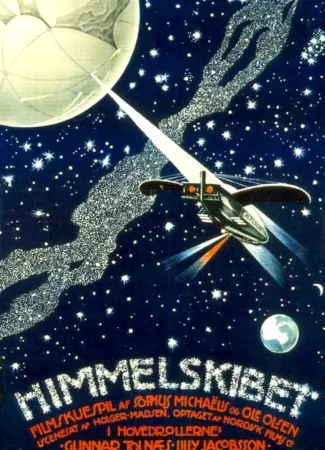


































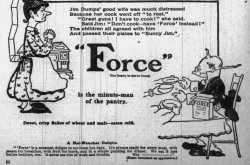



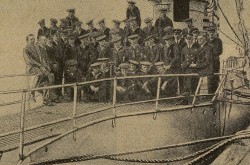
![A block of photographs showing some of the people involved in the bombing of beluga whales in the estuary and gulf of the St. Lawrence River. Anon., “La chasse aux marsouins [sic]. » Le Devoir, 15 August 1929, 6.](/sites/default/files/styles/thumbnail_7/public/2024-09/Le%20Devoir%2015%20aout%201929%20page%206.jpg?h=584f1d27&itok=TppdLItg)

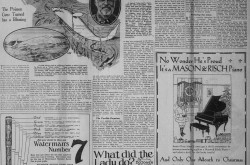
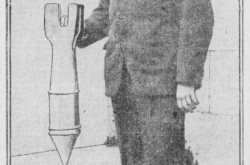







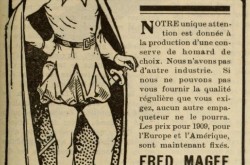





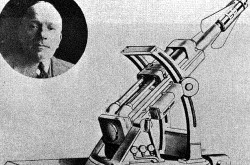
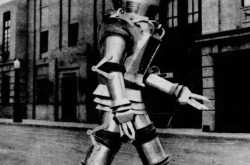

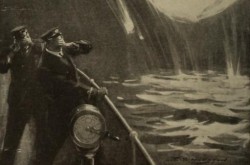


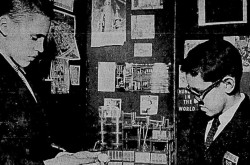

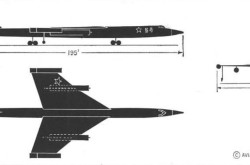













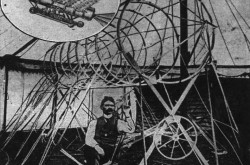
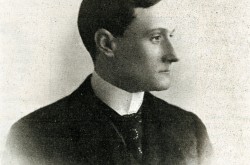

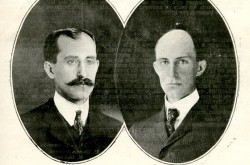












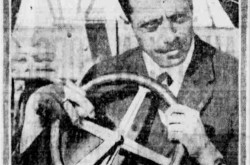

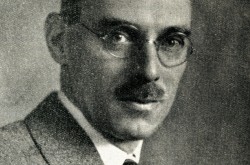















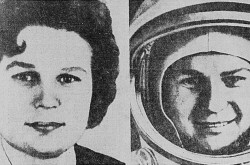















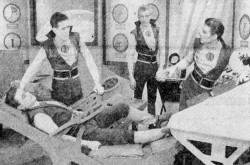

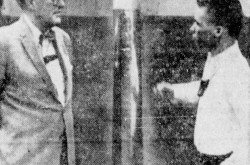


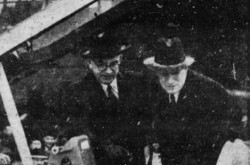


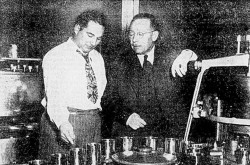


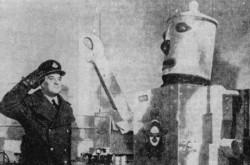







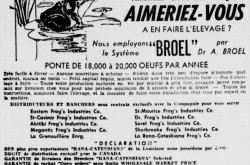

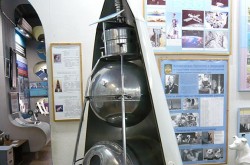




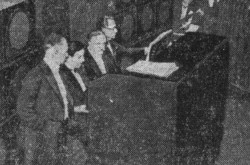


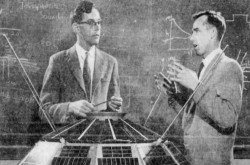

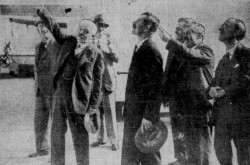















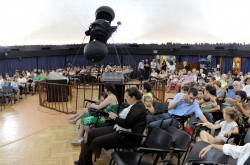











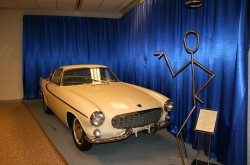

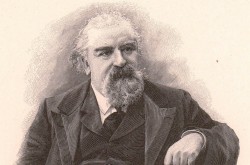
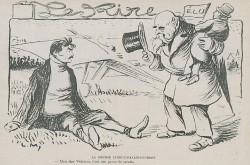
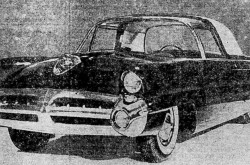


























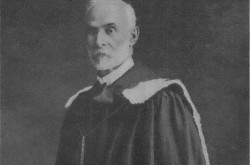







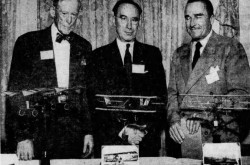



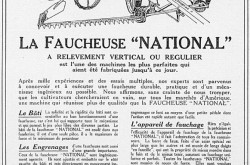


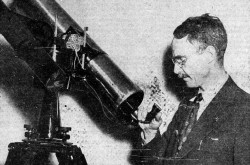


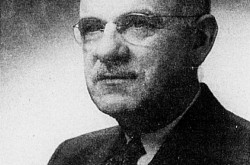






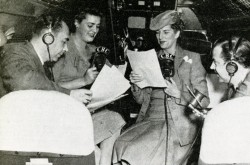
![Peter Müller at the controls [sic] of the Pedroplan, Berlin, Germany, March 1931. Anon., “Cologne contre Marseille – Le mystère du ‘Pédroplan.’ [sic]” Les Ailes, 2 April 1931, 14.](/sites/default/files/styles/thumbnail_7/public/2021-04/Les%20Ailes%202%20avril%201931%20version%20big.jpg?h=eafd0ed4&itok=WnBZ5gMf)

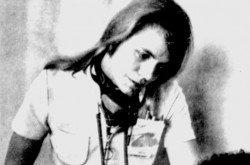

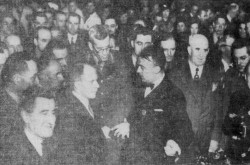








![One of the first de Havilland Canada Chipmunk imported to the United Kingdom. Anon., “De Havilland [Canada] DHC-1 ‘Chipmunk.’” Aviation Magazine, 1 January 1951, cover.](/sites/default/files/styles/thumbnail_7/public/2021-01/Aviation%20magazine%201er%20janvier%201951%20version%202.jpg?h=2f876e0f&itok=DM4JHe5C)


